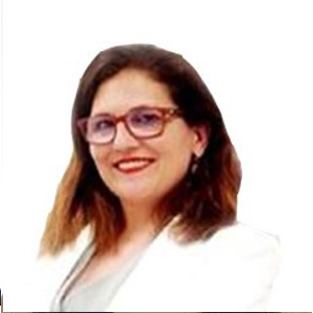
Successful completion of one of our projects in Guatemala
Successful completion of one of our projects in Guatemala Laura Núñez Muñoz More than 20 years of general experience and, for the last 15 years,


Technical Manager in the Property Taxation area of Euro-Funding, she is a technical architect specialized in taxation and public finance. Rocío has more than 15 years of experience in real estate valuations and cadastral management, coordination of cadastral registration and optimization of local taxes.
Article 21 of Royal Legislative Decree 7/2015, of 30 October, which approves the revised text of the Law on Land and Urban Rehabilitation, establishes that all land is in one of two basic situations:
However, for cadastral purposes only, real estate is classified as follows:
In addition, we find Real Estate with Special Characteristics (BICE), which is a complex group of specialised uses such as dams, motorways, airports, etc. ….
The valuation of rural real estate for the tax authorities is carried out in different ways, depending on what it is used for:
It should be remembered that the cadastral titleholder is obliged to declare any modification of use or destination and changes in cultivation or use.
Furthermore, a communication system has been established between administrations with the General Directorate of Cadastre, among others with the Ministry of Agriculture, Fisheries and Food, regarding changes in the cultivation and use of rural real estate, of which they are aware in connection with applications for aid under the Common Agricultural Policy (CAP).
Summarising up to now:
As a consequence of the STS of 30 May 2014, the innovative Law 13/2015, of 24 June, on the Reform of the Mortgage Law approved by Decree of 8 February 1946 and the revised text of the Law on Real Estate Cadastre, approved by Royal Legislative Decree 1/2004, was introduced into the cadastral regulations through Law 13/2015, of 24 June, of 5 March, in addition to the whole issue of coordination, a new wording that included the jurisprudential criterion that considered that urbanisable land without detailed or detailed development planning should be classified as rustic property, and new criteria were approved for their valuation.
As a consequence of the STS of 30 May 2014, the innovative Law 13/2015, of 24 June, on the Reform of the Mortgage Law approved by Decree of 8 February 1946 and the revised text of the Law on Real Estate Cadastre, approved by Royal Legislative Decree 1/2004, was introduced into the cadastral regulations through Law 13/2015, of 24 June, of 5 March, in addition to the whole issue of coordination, a new wording that included the jurisprudential criterion that considered that urbanisable land without detailed or detailed development planning should be classified as rustic property, and new criteria were approved for their valuation.
The taxable base of IBI is constituted, as in the case of urban properties, by the cadastral value, with the peculiarity that the tax rate applied is different to that of urban properties, among other “anomalies” in the formation of the net quota of BIR.
The tax regulations establish a different tax rate depending on whether the property is urban, rustic or of general characteristics, with a maximum of 1.10 for urban properties and 0.90 for rustic properties, with the possibility of increasing the percentage points depending on the intrinsic characteristics of each municipality:
| Puntos Porcentuales | Bienes urbanos | Bienes rústicos |
| A) Municipalities that are the capital of a province or autonomous community | 0,07 | 0,06 |
| B) Municipalities in which public surface public transport services are provided | 0,07 | 0,05 |
| C) Municipalities whose local councils provide more services than those to which they are obliged according to the provisions of art. 26 of Law 7/1985 of 2 April 1985. | 0,06 | 0,06 |
| D) Municipalities in which rural land accounts for more than 80% of the total area of the municipal area | 0 | 0,15 |
A comparison of the urban and rustic tax rates of the main municipalities of Seville, obtained from the cadastral statistics of the headquarters of the General Directorate of Cadastre, shows that, in practically all municipalities, the rustic rate is considerably higher than the urban rate:
Tax by-laws: Seville by Municipality and tax rates
| Urban | Rustic | |
| Alcalá de Guadaíra | 0,5200 | 0,8430 |
| Cantillana | 0,5610 | 1,1090 |
| Carmona | 0,6270 | 1,1600 |
| Constantina | 0,5000 | 0,7500 |
| Dos Hermanas | 0,4000 | 0,8500 |
| Ecija | 0,5000 | 1,0100 |
| Estepa | 0,6500 | 0,9600 |
| Lebrija | 0,6800 | 0,9400 |
| Lora del Río | 0,6500 | 0,9900 |
| Marchena | 0,6611 | 1,0320 |
| Morón de la Frontera | 0,6850 | 1,1600 |
| Osuna | 0,6850 | 1,1600 |
| Palacios y Villafranca | 0,5797 | 0,6577 |
| Pilas | 0,6500 | 0,8700 |
| Puebla de Cazalla | 0,5500 | 1,1100 |
| Puebla de los Infantes | 0,5500 | 0,5000 |
| Puebla del Río | 0,4700 | 1,1100 |
| Real de la Jara | 0,6500 | 0,9000 |
| Rinconada | 0,5043 | 1,1580 |
| Sevilla | 0,6758 | 0,6990 |
| Utrera | 0,6000 | 1,1000 |
This tax rate, which in some cases is double the urban tax rate, means that any discrepancy between the physical reality and the cadastral reality, which may not seem to have cadastral relevance, in the tax sphere represents an excessive burden that the taxpayer is not obliged to bear.
Euro-Funding can detect whether the cadastral reality of your property accurately reflects your real estate reality and optimise the taxation of all your assets, whether urban, rustic or with special characteristics.
Our tax consultancy team is made up of a multidisciplinary group of experts in properly transferring the physical reality of each property to the cadastral database in order to achieve tax savings with a successful remuneration model.
94% of our clients highlight the high specialisation of our technical team.
Reducing the tax burden of your property is possible if you know how.

Successful completion of one of our projects in Guatemala Laura Núñez Muñoz More than 20 years of general experience and, for the last 15 years,

PERTE for industrial decarbonisation approved PERTE for industrial decarbonisation approved The PERTE is approved with the aim of accompanying industry in its decarbonisation process to

Keys to efficient driving Enrique Roca Industrial Technical Engineer with specialization in Mechanics. He is currently Technical Manager in the Energy Efficiency and Sustainability unit
